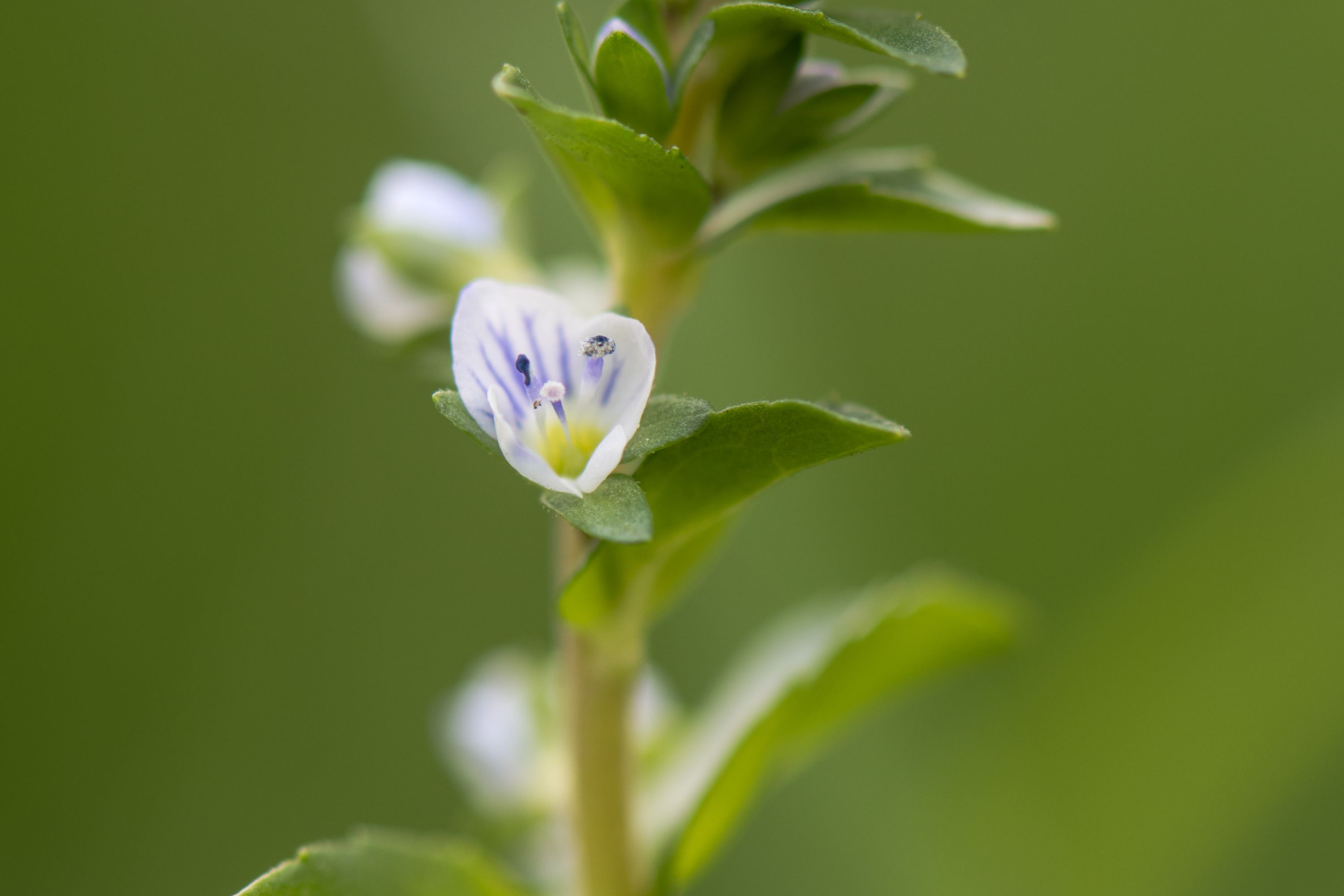Thyme-leaved speedwell
(Veronica serpyllifolia)

Description
Veronica serpyllifolia, the thyme-leaved speedwell or thymeleaf speedwell, is a perennial flowering plant in the plantain family. It is native to Europe, but can be found elsewhere on most continents as an introduced species. Veronica serpyllifolia L. initially grows low to the ground then will start to grow upright. The flowers are small, white, and have dark purple marks on their petals. The leaves are oval, borne on creeping stems. Roots grow from leaf axils. The prostrate stems bear erect flowering branches up to 20 cm high. The leaves are opposite on short stalks. The flowers are in racemes with a corolla 6 mm wide. The first leaves of the seedling have no petiole, are hairless, and have a smooth margin. Their stems grow from nodes on the rhizomes, allowing it to grow in thick mats close to the ground. The lower leaves are oval and have smooth margins. The upper leaves are oval shaped but smaller than the lower leaves. The lower leaves have relatively short stalks, while the higher or upper leaves are stalkless (lack petioles). Flowers have four petals and grow from the leaf axils. The fruits are capsules. The capsules are obcordate or heart shaped, mostly flattened and have a pubescent outer layer with a notched tip. Veronica serpyllifolia capsules are approximately 2.5-3.5 mm long. Once the capsules are mature, they open to release many small seeds. Their root systems are both fibrous and rhizomatous. The fruit is lined with hairs and the seeds on the inside of the capsule are also flattened. This plant can be hard to spot as it is relatively small and grows in patches which can be covered by grass. They are more noticeable when they bloom. Veronica serpyllifolia reproduces either by dropping its seeds or by rooting stems. Veronica serpyllifolia L., commonly known as thyme-leaved speedwell, is native to Europe and is introduced to North America and New Zealand. As of 2010, it is known to occur in 37 of the US states and is considered a weed in North America. Veronica serpyllifolia frequently occurs in open grass lands and cultivated areas on lighter soils. Veronica serpyllifolia grows in full sunlight, tolerates partial shade, and thrives in a moist environment during the spring. They can grow in elevations up to 3300 m. Pollinators of V. serpyllifolia include flies and bees that visit the flowers for nectar.
Taxonomic tree:







